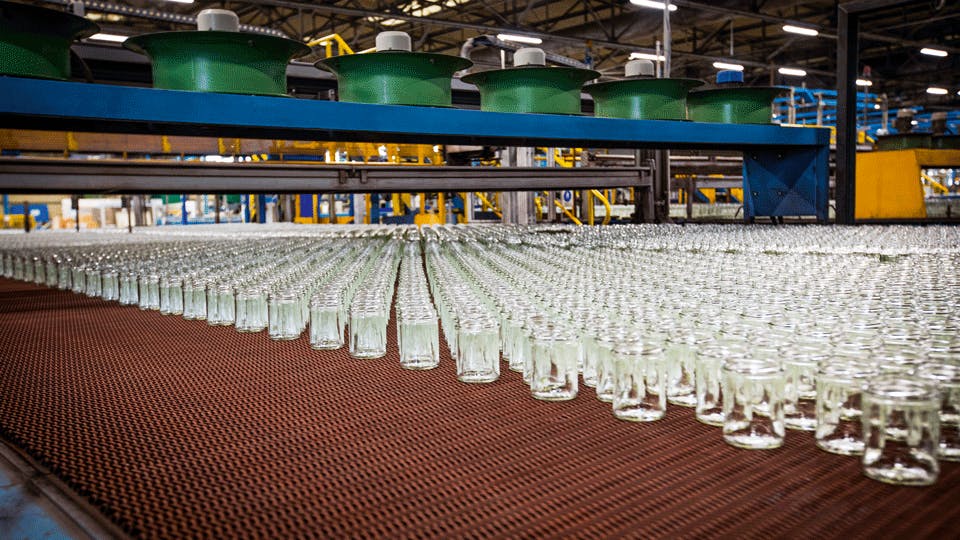
Delivering the world’s glass with less gas
Pescia, Italy

Your Guides:
[ Alessandro Pallotti ], Key Account and Business Development Manager at Air Liquide Italy, [ Benjamin Coiffier ], On-Site Innovation Program Manager, Industrial Merchant activity at Air Liquide, [ Andrea Cendron ], Technical Director at Verallia Italy
Entering the meeting room at the Verallia glass plant in Pescia, Italy, the first thing one notices is all the bottles of water in the middle of the table. Luckily, we don’t have to wait long until our host, Andrea Cendron, Technical Director at Verallia Italy, gestures toward them: “Please, help yourselves,” he says, adding with a chuckle, “We’re not running short.”
That’s certainly true: with 34 plants producing more than 16 billion glass containers every year, Verallia is the world’s third largest manufacturer of bottles and jars for beverages and foodstuffs. And after the tour - especially the brief stop by the furnace - we’re thirsty.
“Glass is made by melting a mixture of silica, contained in sand, or indeed recycled glass - and this requires temperatures of around 1,500°C,” Andrea explains. By way of comparison, gold melts at just over 1,000°C; lead is already liquid at 300°C. “Our production process is highly energy intensive, so our main challenge is to lower our carbon emissions.
“This is where Air Liquide can help,” says Alessandro Pallotti, Key Account and Business Development Manager at Air Liquide Italy. “In late 2021, Verallia announced ambitious sustainability objectives, and we were able to respond with a proposal specifically tailored to the glass market. Here in Pescia, we will be combining our new next-generation, on-site oxygen production unit, which will be 10% more energy efficient than the previous generation, with our HeatOx™ technology, which will recover wasted heat from furnaces to save up to 20% of the energy needed for the glass melting process. The result: an 18% reduction in CO2 emissions. The solution will also deliver an up to 90% reduction in nitric oxide emissions, which in high concentrations can be harmful to health.”
His colleague, Benjamin Coiffier, On-Site Innovation Program Manager at Air Liquide Industrial Merchant activity, explains the details. “Let’s start with oxygen: furnaces are heated by burning natural gas with air. If pure oxygen is used instead of air (this is called oxycombustion), then nitrogen and nitric oxide emissions are removed from the process and efficiency is higher.” He continues, “Now, separating oxygen from air also requires energy, but our new on-site oxygen production units are more efficient than current systems, which lowers both our energy consumption and related carbon emissions; they also produce purer oxygen, further reducing nitric oxide emissions.”
“Then, there is HeatOx™, our proprietary technology that harnesses the high-temperature fumes emitted by the furnace to preheat the natural gas and oxygen fed into it. They must be at about 500°C on entering the furnace. Thanks to heat recovery, less energy is needed to bring them up to temperature,” Alessandro further explains.
